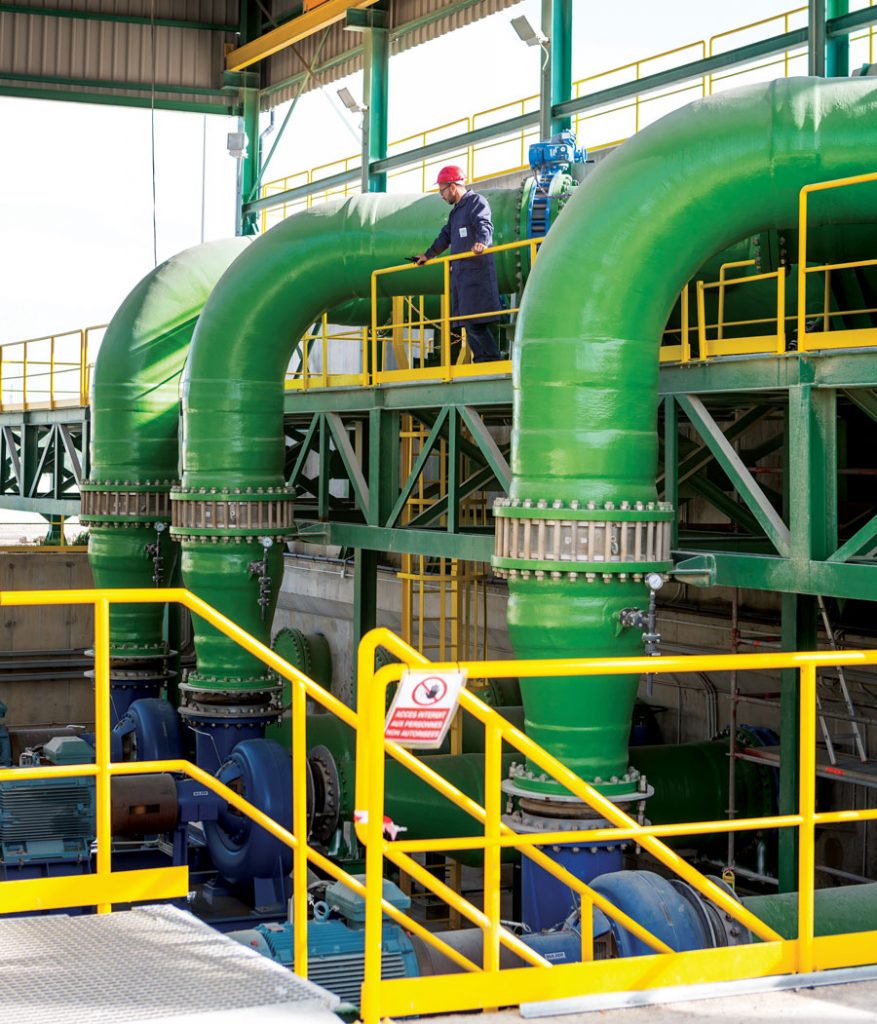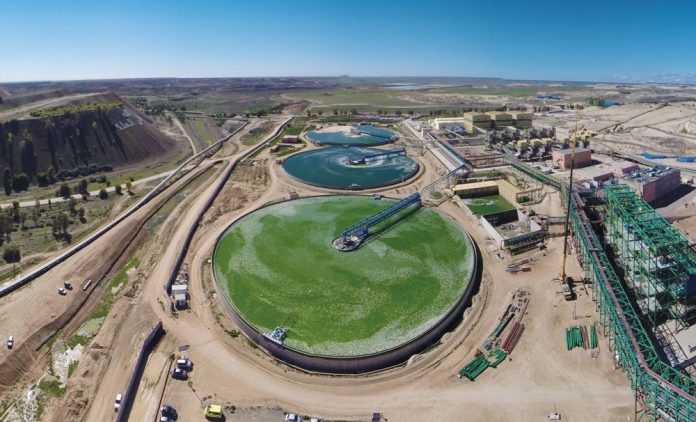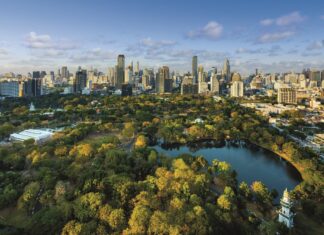With exclusive access to the world’s largest phosphate reserves and operating the world’s largest industrial installations, all designed according to the highest international processing, technology and industrial facility standards, OCP is the world’s leading producer of phosphate rock, phosphoric acid and phosphate fertilisers (with 28 percent of the world export market share of phosphate in all its forms).
Fully integrated throughout each step in the value chain, the OCP Group’s activities range from mining mineral resources to producing and marketing high value-added products.
In 2008, as part of its development policy, OCP introduced a new global processing strategy designed to mobilise a MAD200 billion (US$20.7 billion) investment. Spread over 15 years, OCP’s chief priority was the preservation of natural resources, the key issue including the need to reconcile the streamlining of water usage with the needs of mining and industrial installations. From 85 million cubic metres in 2014, those needs will eventually reach 160 million cubic metres annually.
To that end, the OCP Group has devised an innovative approach to the integrated management of its water needs by implementing the following three-pronged “Water Strategy”.
Optimisation of water use throughout the value chain
• For mining installations Optimisation of water use throughout the value chain. More than 80 percent of the washing sludge water is being reclaimed and recycled back into the process. That high performance is made possible by OCP-developed process of enrichment by washing-floatation used in the Khouribga and Youssoufia (and soon Laayoune) washing installations. A 20 percent water use reduction per metric tonne of enriched rock through improved water reclamation from washing sludge.
• For reclamation installations A near 25 percent reduction in specific water consumption in the phosphoric acid production units thanks to the adoption of the latest water recycling techniques. By choosing to use fresh water in some of our processes, we can recycle up to 100 percent of the water used to wash the gasses emanating from the phosphoric acid units, and 100 percent of the evaporated water coming out of the concentration process.
• For phosphate transportation An annual saving of nearly 3 million cubic metres of water thanks to the slurry pipeline linking Khouribga to Jorf Lasfar. This hydraulic transportation system is very environmentally friendly. The pipeline transportation of washed phosphate as
pulp creates major water and energy savings, as railway transportation requires drying the phosphate out and remoistening it upon arrival.

How to ensure an optimal management of hard-to-renew fresh water resources The OCP Group has initiated numerous national natural water resource optimisation projects adapted to the water needs of each of the regions in which it operates.
In parallel, the OCP Group also promotes the use of surface water in replacement of ground water. This was facilitated by the conveyance of surface water from the Ait Messaoud and Al Massira dams for the industrial water needs of the group’s mining sites.
How to mobilise unconventional water resources
Part of the OCP Group’s water conservation strategy is the mobilisation of so-called unconventional resources by setting up wastewater treatment and reuse systems as well as seawater desalination plants, a subject matter in which OCP has more than 40 years of experience through its Phosboucraa desalination unit in Laayoune.
The commitment to value water and conserve natural resources led OCP to invest in seawater desalination facilities to meet all of its new industrial development needs without making additional demands on conventional water sources
To date, OCP has opened three wastewater treatment plants, one of which, located in Khouribga, has been operational since 2010, while those in Benguerir and Youssoufia have been used since 2015. In total, the three plants have an urban wastewater treatment and re-use capacity of more than 10 million cubic metres for phosphate washing facilities.
Moreover, some of the wastewater being treated as part of the Benguerir wastewater treatment plant programme is being used for the irrigation needs of the Mohammed VI Green City. All of these plants are equipped with state-of-theart high-performance technology.
Remarkably, the biogas reclamation produced by the wastewater treatment process generates enough electricity to cover 30 percent of the wastewater treatment plant energy needs.
The OCP Group is also planning to erect further water treatment facilities in the other Moroccan cities of Kasba Tadla and Fquih Ben Salah.
Seawater desalination programme
The commitment to value water and conserve natural resources led OCP to invest in seawater desalination facilities to meet all of its new industrial development needs without making additional demands on conventional water sources.
The Jorf Lasfar industrial complex is a shining example of this policy, as it is now being fed by a newly opened seawater desalination plant. Its initial annual capacity of 25 million cubic metres will eventually reach a total capacity of 75 million cubic metres per year.
There is also a unit using the energy surpluses of the production units through a reverse osmosis process. Similar to the one in operation at Phosboucraa desalination plant in Laayoune since 2005.
A desalination project similar to the Jorf Lasfar facility is under study, to meet the water needs of OCP’s Safi industrial complex.






